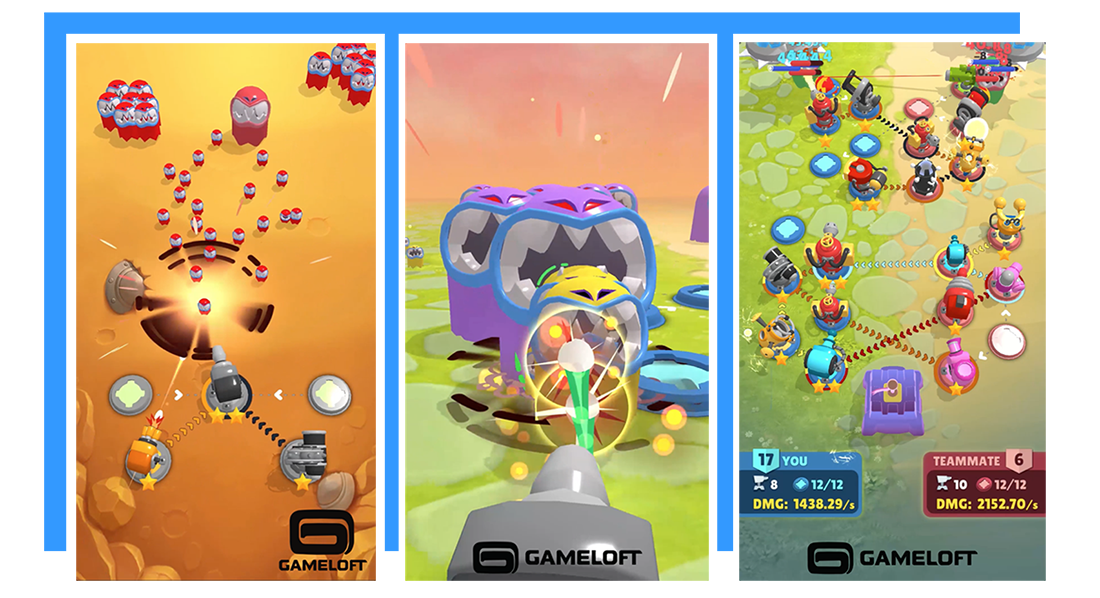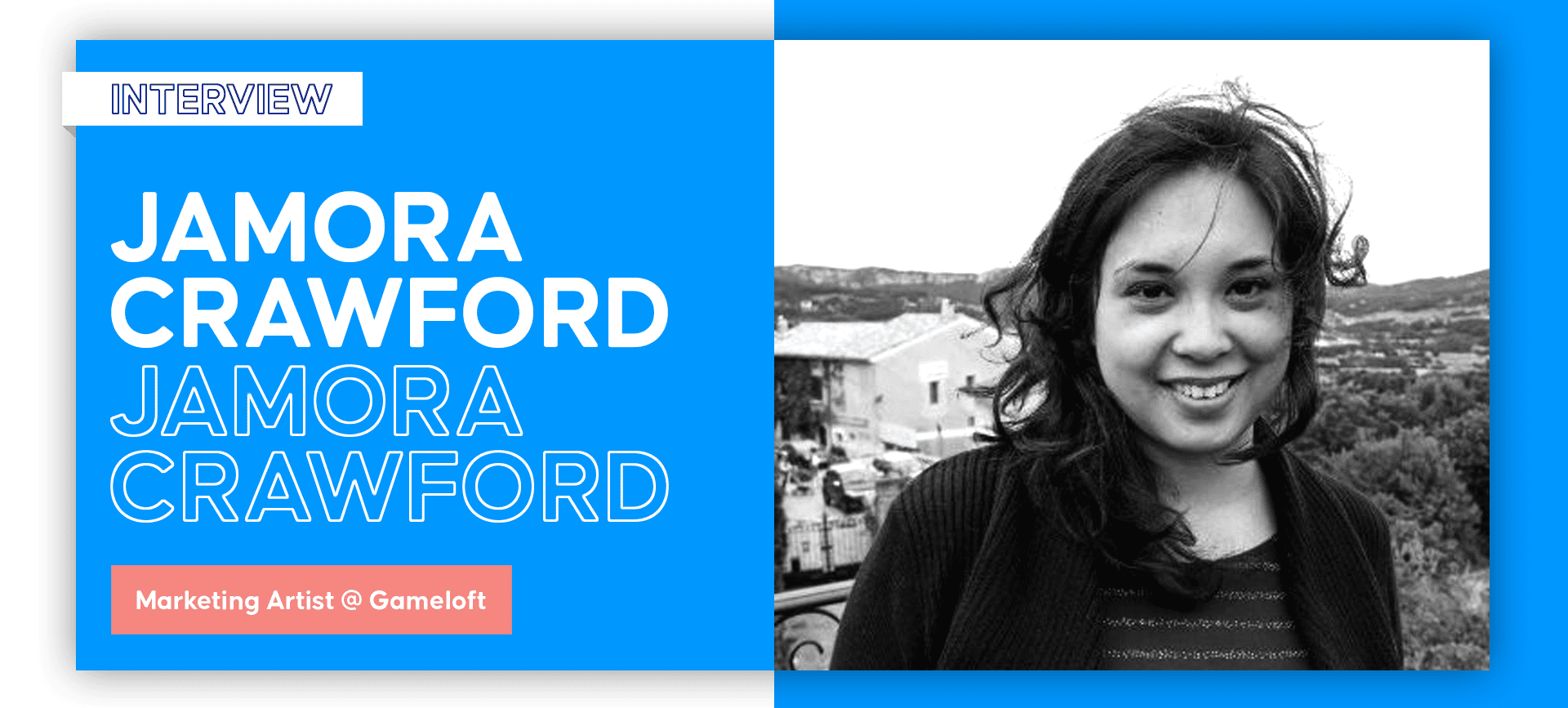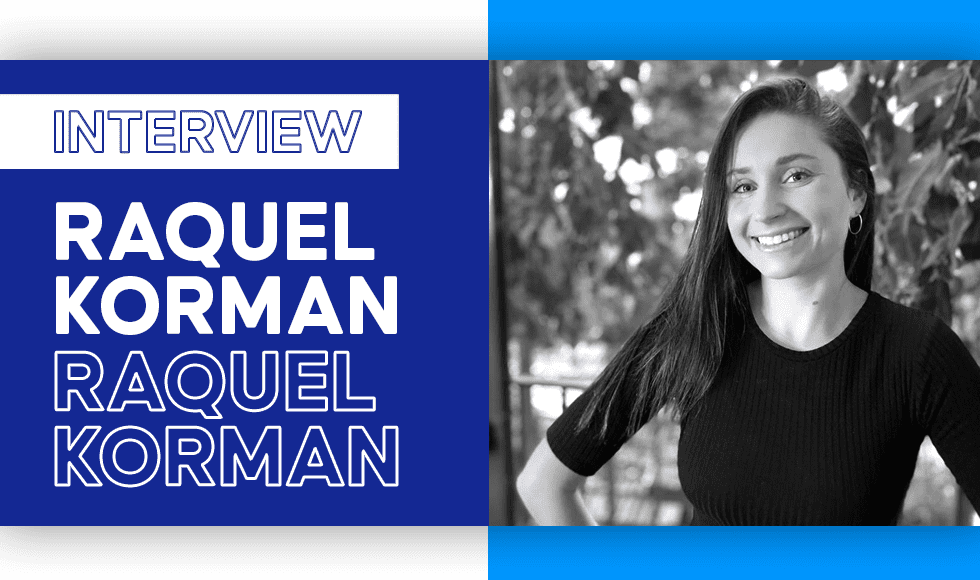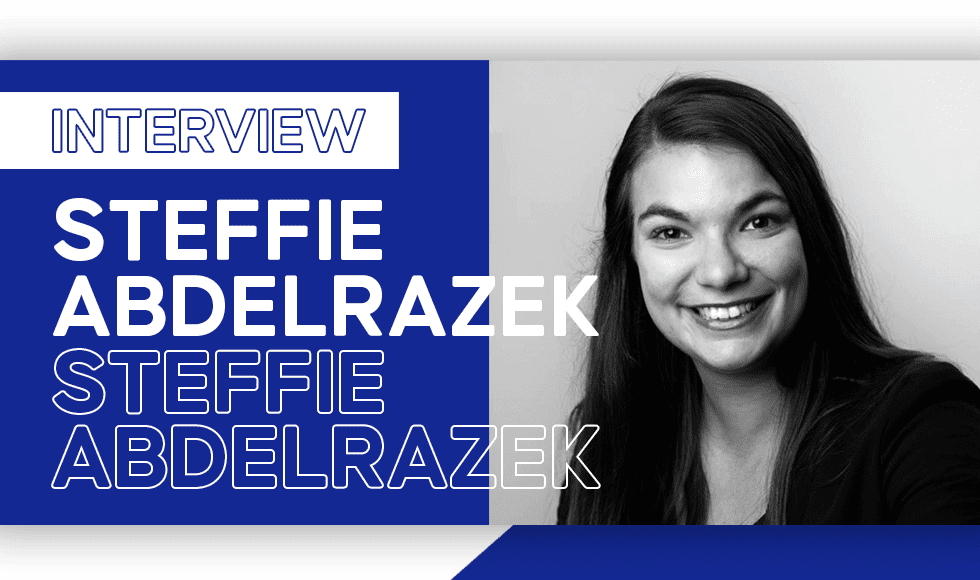In gaming, combining human creativity with automation in the right way can unlock opportunities for both your audience and your team. And in Marketing Artist roles, working closely with game designers and UA managers not only enhances the engagement with your audience but sets the foundation for successful campaigns.
We had the opportunity to sit down with Jamora Crawford, Marketing Artist at Gameloft, to discuss how she approaches her creative process, why producing high-end marketing creatives is key, and the importance of the 3-second rule.
Let’s dive in!
Hi Jamora. Please walk me through your background a bit. What drew you to Gameloft initially? And why do you like doing the work that you do?
Jamora: My background is in photography and video art. But I’ve always loved video games since the Super Nintendo Entertainment System (SNES). So I jumped at the opportunity to become a marketing artist. I first started at Pretty Simple (known for the hit, Criminal Case) and it was wonderful. They taught me everything I know.
When it was time, I chose Gameloft as the next step in my career. It was a position at the Gamelab in Paris and I wanted the chance to work on as many games as possible, in all genres. When I first became a marketing artist, I thought it would just be video capture and editing. However, it has become so much more than that!
My job is one part camera work, another part human psychology (what makes the viewers click?), and also this sense of competition to beat out other ads and get the game out there to consumers. I admire the hard work and dedication of the game teams and nothing makes me happier than helping them achieve success.
What are some of the biggest gaming industry changes you’ve seen since you’ve started your role?
Jamora: The constant change in trends is one thing, but privacy laws and data protection have had the biggest impact in the industry. These laws are extremely important and are necessary to protect the consumer. Most importantly, how do I feel as a consumer? How do I want my data to be handled? I approach ads with this in mind.
In your opinion, what are the creative production woes around scaling creatives?
Jamora: Not enough time! If I could duplicate myself many times over, there would be no problem! But I am only one person. The woe of scaling up creatives is that your best performers are quickly no longer your best performers and so you are constantly making reiterations or new concepts to adapt to the feeds/ad networks.
Could you walk me through your creative process?
Jamora: Benchmarking is my friend. Sometimes I will just sit for an hour watching as many rewarded videos as I can. I also try out competitor games and see how they do their ads. Then I explore the game that I’m marketing on my phone or in Unity. I’ll start a marketing plan and strategize with a UA manager.
I often consult with the game designers to see what features could be interesting for the creatives. After that, I’ll do my recording and editing.
“The woe of scaling up creatives is that your best performers are quickly no longer your best performers and so you are constantly making reiterations or new concepts to adapt to the feeds/ad networks.”
Jamora Crawford, Marketing Artist at Gameloft
To make sure an ad will be good, I look at the video on my phone. Sometimes I’ll even look at it in different light settings (during the day or at night) just to make sure the video looks good on that tiny screen in whatever situation.
After video production is over, I keep close to the campaign while it’s running. I’m always aiming for a video to have more than 3 seconds of average watch time. The longer the viewers watch, the more they are interested!
What exactly does a good relationship between you and your audience look like?
Jamora: In my opinion, it’s giving your audience a consistent level of quality.
For instance, for our Gamelab games, we love to hear feedback from our players. A really good synergy of both game developer and player is to take really good feedback and implement it into the game. For ads, it is then showcasing this new feature. I think this builds a great repertoire between brands and their audience.
How do you approach the issue of localization in content and reaching out to a diverse audience at scale?
Jamora: Currently in my position we do not yet localize outside of the US/EU market. However, my previous experience has taught me that having really good translations matters so much.
We often joke about poor English translations that we see in ads but others may not see it as funny in their language. Following and respecting a different country’s rules about ads is vital. And above all, educate yourself about that culture and produce ads that are sensitive to it. I think it’s key that a marketing artist is super vigilant about this and to also check their privilege before creating an ad.
Why is it important to maintain quality across scaled creatives? And how does Creative Automation solve quality issues in scaling?
Jamora: While my colleagues are handling this aspect, in my opinion, it’s always important to maintain consistency with the quality of the creatives. Think double and triple-checking work, showing anybody and everyone your ad to see if it works fine. If you are working with other marketing artists, exports need to all be the same according to the standard.

Credits: Auto Defense video game by Gameloft
Will automation replace human creativity?
Jamora: Automation can help change the language in a video header and export videos in a certain size, but it does not have the capacity yet to have a unique vision. A computer can play smart… it can strategize, but can it surprise us? Time will tell.
What piece of advice would you like to give to brands struggling to reach their audience in an over-crowded space?
Jamora: If your average view duration in your ads is less than 3 seconds, the first few seconds of your video creative is not great. Start the first scene immediately in action, test different background colors, and remove UI that’s difficult to understand.
Remember that the feed is often monotone and people are scrolling or swiping by. If it doesn’t capture your attention within 3 seconds, you’re doing it wrong!
Where do you go online (or offline) to be inspired?
Jamora: I’m a meme lord. I love to immerse myself in pop culture and Netflix and just absorb things. It’s also good to consume media that’s not in your native language – Korean dramas, French memes, playing the top games from China, looking at ads or billboards in a city you’ve never been before. Don’t be afraid to go outside your comfort zone!



